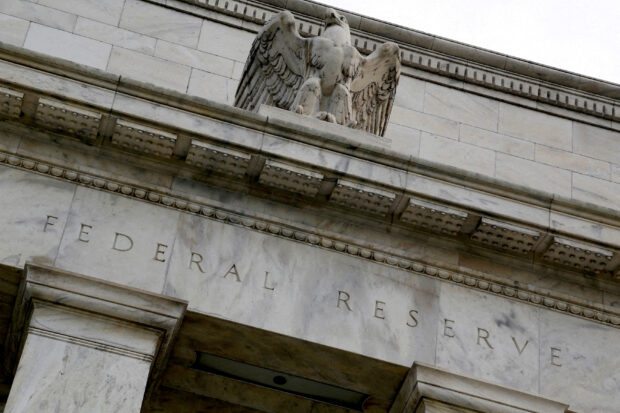
An eagle tops the U.S. Federal Reserve building’s facade in Washington, July 31, 2013. REUTERS/Jonathan Ernst/File photo
Federal Reserve policymakers waiting for more evidence of easing price pressures before they cut interest rates may find themselves waiting a bit longer, after a government report on Tuesday showed consumer inflation stayed elevated last month.
The consumer price index was up 3.1 percent in January from a year earlier, down from its 3.4 percent pace in December but more than the 2.9 percent economists polled by Reuters had been expecting. Underlying core inflation, which strips out energy and food prices, rose 3.9 percent from a year earlier for a second straight month.
That stickiness is not going to add to Fed confidence that inflation, which is down from its 40-year-high in mid-2022, is truly on a path to the Fed’s 2 percent goal.
READ: Rents boost US consumer prices in Jan
The Fed last month kept its policy rate in the 5.25 percent to 5.5 percent range, where it has been since last July, and while Fed Chair Jerome Powell noted progress, he also said March would likely be too soon for the Fed to be sure it has won the fight with inflation.
With the job market still strong — U.S. employers added more than 350,000 jobs in January, a report earlier this month showed — still-too-high inflation gives the U.S. central bank little reason to rush on rate cuts.
After Tuesday’s inflation report, traders previously betting on a rate cut at the Fed’s April 30-May 1 meeting now see June as more likely.
“If this keeps up with another month or two of inflation staying high, you can kiss a June (rate cut) goodbye and we’re probably looking at September,” said Peter Cardillo, chief market economist at Spartan Capital Securities. “It’s a hotter-than-expected report and it’s part of what the Fed has been alluding to when it says it’s too early to say that inflation has been beaten.”
READ: US Fed holds key rate steady as Powell says March cut unlikely
A big part of the CPI’s strength in January was an acceleration in shelter costs, to 0.6 percent from a month earlier, from a 0.4 percent pace in December.
The Fed targets 2 percent inflation by a different measure, the personal consumption expenditures price index, which gives less weight to the shelter component — moving some economists to predict that the CPI report won’t bust Fed confidence in inflation’s decline after all.
Goods prices fell, the report showed, with clothing down 0.7 percent and used cars down 3.4 percent.
But the report also showed services inflation continuing to rise, with medical services up 0.7 percent and airfares up 1.4 percent.
“This was a broad-based increase in core services that justifies the Fed’s “wait-and-see” decision,” said Inflation Insights’ Omair Sharif.
“We had some good disinflation data over the second half of 2023, but it was never going to be a straight line down, and some bumps along the road were to be expected.”